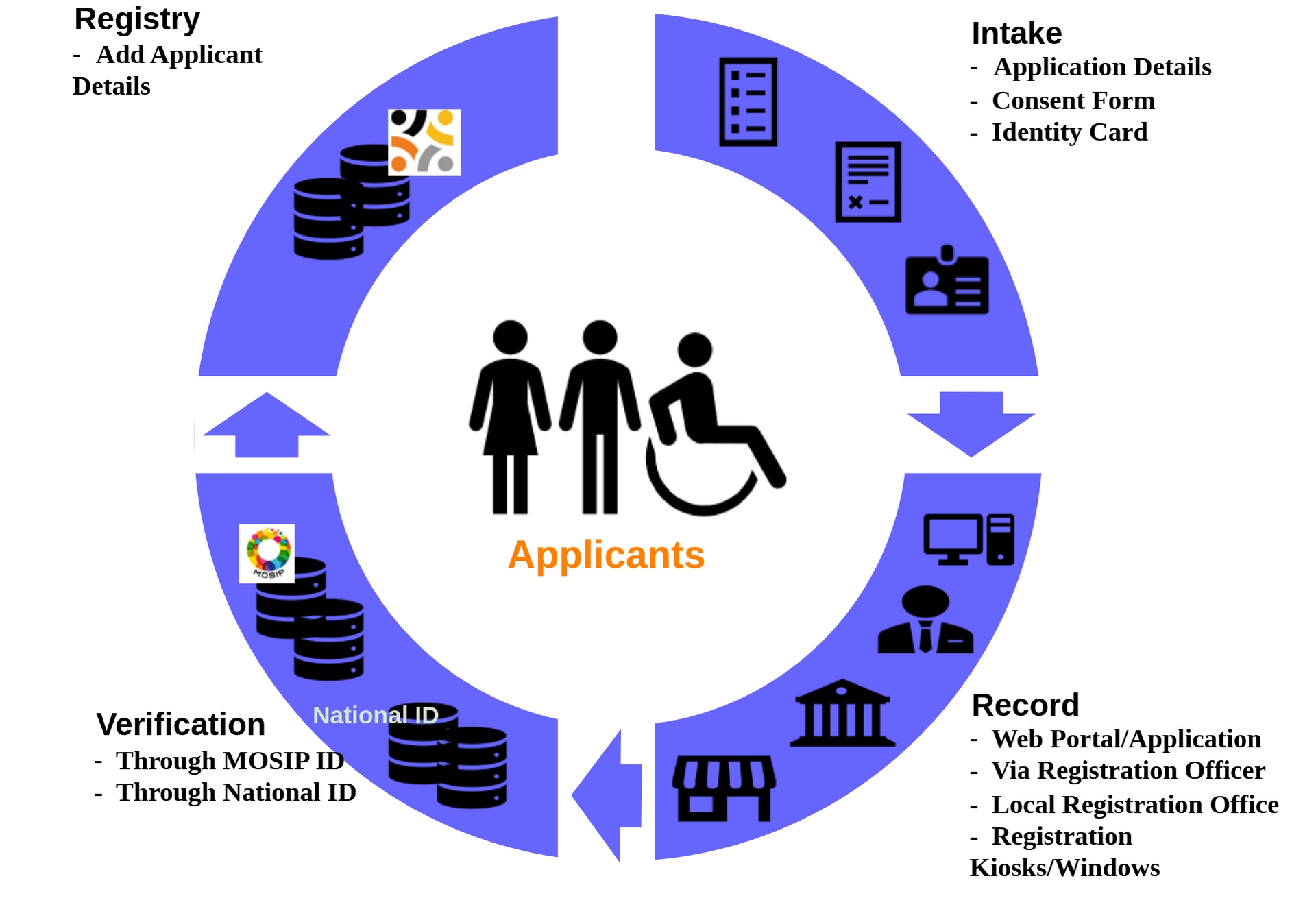📋Registration
Introduction
In the OpenG2P platform, registration is a series of three processes - intake, recording, and verification. Intake is the process of gathering information from applicants while recording and verification are the processes to add the authenticated information to the Registry. The platform verifies the applicant's details in the background by confirming the identity and demographic details of the applicant digitally.
Registration aims to provide detailed records for Eligibility Assessment in the Registry. It must be noted that at this stage, the people are referred to as applicants or registrants. Once the applicants/registrants pass the eligibility criterion set by the program manager, they become eligible to enrol in the program and are referred to as beneficiaries.
This is a pictorial representation of the OpenG2P registration process.

Registration approaches
Registration can be carried out via multiple channels such as digital service windows/kiosks, social workers, local registration offices, door-to-door visits, referrals from other programs, etc. The registration approach can be either on-demand or administrative-driven. Three key features distinguish between these two approaches:
Applicant-initiated vs program-initiated
Whether the registration process was initiated by the applicant (on-demand) or by the program administrator (administrator-driven)
Individual vs group registration
Whether applicants registered themselves individually (on-demand) or registered as a group/family/household (administrator-driven)
Continuous vs time-bound
Whether applicants could register at the time of their choosing (on-demand) or had to apply in a specific time window (administrator-driven)
Registration interfaces
While on-demand and administrative-driven approaches are two distinct models, the registration process operates in a spectrum between these two models. For example, a program may allow the applicants to register individually (on-demand) but may allow them to apply only in a certain time window (administrative-driven). OpenG2P platform has a flexible implementation and through its various Registration Interfaces aims to cater to a combination of approaches across different registration modalities and programs.
Registration features
OpenG2P registration interfaces are key client-facing interfaces. The clients here could be the applicants, social workers, program administrators, program managers, etc. There are the main features offered by these interfaces:
Authentic
The clients log into the system using their MOSIP ID/National ID allowing the information to be verified while it is being recorded. Additionally, logging in using National ID can pre-fill the information fields in an authentic manner.
Always available
OpenG2P's Mobile Registration App allows social workers and field registration officers to record the applicant's information without any internet connectivity.
Secure
The applicant's information is encrypted at rest and during transit allowing the information to be secure against malicious attacks.
Privacy-preserving
The platform allows for consent forms to be filled out and recorded before starting the intake. The recorded information is not used for any purpose other than the explicitly stated purpose in the consent form.
Customizable intake
The applicant information is filled in using general intake sheets. These intake sheets can be customized per the assessment information required by the program.
Notifications
The platform can be configured to send Notifications to the applicants via multiple channels such as email, sms, etc.
Developer References
Guides
FAQs
Last updated